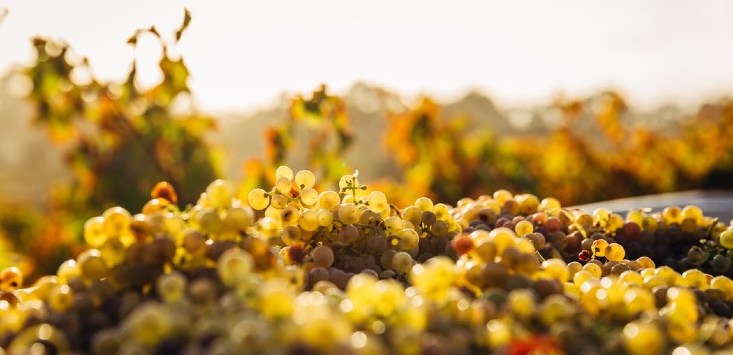
Grapes in the Barossa Valley. Source: Unplash/Thomas Schaefer.
Australia’s wine exports have defied the coronavirus pandemic economic slowdown to reach their highest value since 2007.
All of Australia’s top-five export markets experienced growth in value in the 12 months to September 2020 to reach a total value of $2.99 billion, according to Wine Australia’s latest Export Report released today.
The 4% increase in value was matched by a 4% increase in price per litre of $3.89, but the overall volume of exports declined slightly by 0.4% to 771 million litres in line with Wine Australia’s premiumisation strategy.
The three months between July 1 and September 30 showed the strongest growth as many parts of the world emerged from pandemic lockdowns.
Wine Australia chief executive officer Andreas Clark said the overall value is at the highest level since exports reached $3 billion in the second half of calendar year 2007.
“Despite the unprecedented disruption that we’ve seen in markets around the world, Australian wine export volume has held reasonably steady and it is particularly pleasing to see both the overall value and the average value of exports growing during these challenging times”, he said.
For the 12 months to the end of September 2020, the growth in value was predominantly driven by exports to the United Kingdom and mainland China. And that growth has been particularly strong in the last quarter of the 12-month period.
“During the July to September 2020 quarter, the value of exports increased by 23 per cent compared to the same period in 2019, and this comes after declines of 4 per cent in the April to June quarter, and 7 per cent in the January to March quarter,” Clark said.
“Throughout the COVID-19 pandemic, there have been clear trends for wine consumption emerging around the world.
“While premiumisation has continued, there has also been a resurgence in commercial wines, and this is evident in the growth that we’ve seen in different price segments, where it was particularly strong at the low and high ends.”
Of the 117 destinations that Australian wine was exported to in the 12 months to September, the most significant growth came from Europe, where exports were up 16% to $678 million.

Source: Wine Australia.
Sales to the UK were also up 18% to $430 million while sales to Mainland China grew by 4% to $1.2 billion.
South Australia is responsible for about 50% of Australia’s annual wine production, 80% of premium wine and 60% of wine exports. It is home to several world-renowned regions including Barossa, McLaren Vale, Adelaide Hills and Coonawarra.
It is also home to iconic wine brands including Penfolds, Jacob’s Creek, Hardys and Wolf Blass.
In August, China announced it had launched an anti-dumping investigation. Companies asked to provide information to the probe, including Penfolds parent company Treasury Wine Estates and Casella Family Wines, have until mid-November to complete questionnaires to assist the Chinese government with its investigation.
A second investigation was subsequently launched by China into countervailing duties and involves the same companies, with the addition of Pernod Ricard, the makers of Jacob’s Creek.
South Australian Wine Industry Association chief executive Brian Smedley said some companies were still doing well in Australia’s largest wine market, China, while others are struggling depending on a number of factors, including the strength of their brands and distribution networks.
“So for those figures to demonstrate what they have is a welcome surprise because they are showing strong stability and some elements of growth there,” he said.
“We certainly were aware, from anecdotal evidence within the industry, that we were seeing some additional activity in the UK, and that seems to be being shown in these figures.
“In the lead-up to Brexit people are potentially wanting additional Australian wine in the market, and to some extent, we are also seeing that in China.”
Smedley said the major wine companies singled out in the Chinese investigations were busily preparing their questionnaires ahead of the deadline.
“The process is still continuing and the companies in the anti-dumping investigation need to be completing their questionnaires and the countervailing duties investigation. I’ve had requests most days for information to respond to that questionnaire,” he said.
“Whilst in the public since it may be quiet, the industry is very, very busy filling out its obligations relating to the process.”
This article was first published by The Lead.
Handpicked for you

South Australia lands partnership with multimillion-dollar US marketplace to promote red wines from Down Under



COMMENTS
SmartCompany is committed to hosting lively discussions. Help us keep the conversation useful, interesting and welcoming. We aim to publish comments quickly in the interest of promoting robust conversation, but we’re a small team and we deploy filters to protect against legal risk. Occasionally your comment may be held up while it is being reviewed, but we’re working as fast as we can to keep the conversation rolling.
The SmartCompany comment section is members-only content. Please subscribe to leave a comment.
The SmartCompany comment section is members-only content. Please login to leave a comment.